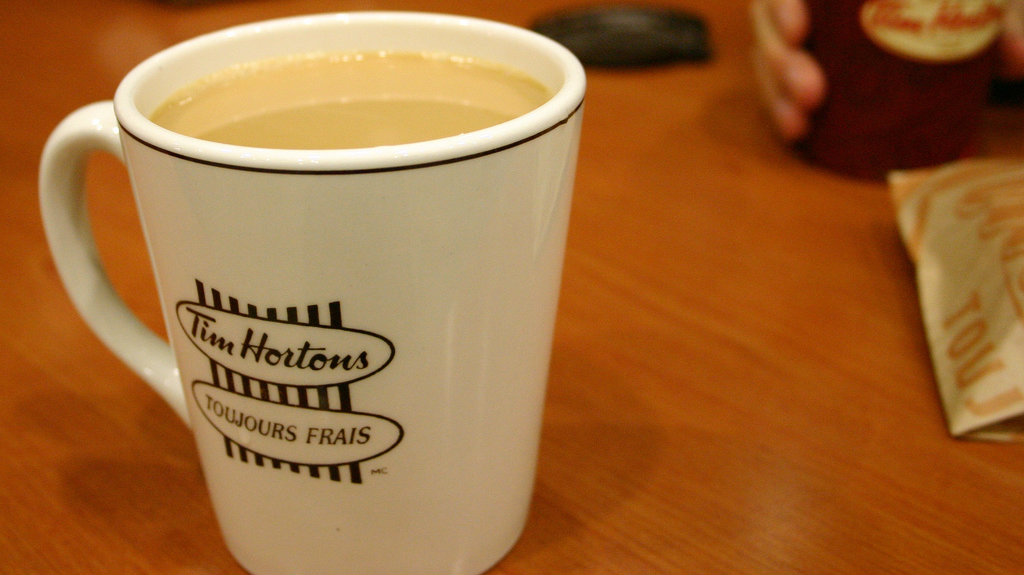Restaurant Brands International Inc. (TSX:QSR)(NYSE:QSR) announced its first quarter results April 24, and they were generally solid both on the top- and bottom-line; its stock rose a buck or two on the positive news.
Although I’m very negative on the company’s treatment of both franchisees and front-line employees, it’s hard to deny Restaurant Brands’ profitability. Analysts were expecting $0.56 per share in the first quarter, but it delivered $0.66 per share, a nice beat at a time when investors are losing their confidence in the parent company’s ability to grow Tim Hortons in Canada.
The turnaround
To counter that, Restaurant Brands has launched “Winning Together,” a plan intended to make the Tim Hortons’ stores more customer-friendly through a combination of renovations, an improved digital app for faster ordering and payments, and new products intended to boost sales.
The cost to franchisees for these renovations is said to be $450,000 per store — an odd way of trying to win back the trust of your restaurant owners.
On its first-quarter conference call, CEO Daniel Schwartz admitted that the company has made mistakes regarding its relationship with its franchisees.
“We’re committed to doing a better job of communicating our story based on observable facts,” Schwartz stated. “We should have done a better job communicating with our Tim Hortons’ franchisees in the past, and there are certainly opportunities for us to improve going forward.”
It appears that Restaurant Brands wants to play nice with its franchisees, half of which are part of the Great White North Franchisee Association (GWNFA), a group of restaurant owners who are upset with the company’s efforts to push more of the business costs on to the franchisees.
With Tim Hortons’ latest same-store sales decline of 0.3%, Restaurant Brands is facing an uphill battle when it comes to turning the business around. Schwartz admitted on its conference call that it wouldn’t be a quick process. Sometimes honesty is half the battle.
If you’re a Restaurant Brands shareholder, it should be reassuring to know that Schwartz recognizes that a fresh coat of paint isn’t going to solve the problems at the once iconic restaurant chain.
Business at its two other chains — Burger King and Popeyes — appears to be reasonably strong, however. Shareholders can take solace in the fact that two-thirds of the overall business is operating efficiently.
Problems still exist
Beyond the Tim Hortons’ problems, Restaurant Brands is also facing some issues that could hurt the company in the future.
And one of the biggest is debt.
The company ended the first quarter with total debt of US$12.3 billion, which is 70% of the company’s market cap, an incredibly high number. By comparison, McDonald’s Corporation (NYSE:MCD) has US$30 billion in total debt, which is 23% of its market cap, a far more reasonable number.
Tied into the high level of debt is a reasonably high level of dividend payouts. Restaurant Brands upped its quarterly dividend payment in February to $0.45, which, as Fool.ca contributor Ryan Goldsman recently reminded investors, works out to 70% of the company’s annual earnings. By comparison, McDonald’s pays out 60% of its earnings in dividends.
The bottom line on Restaurant Brands’ plans to make nice
In a Trumpesque move, Daniel Schwartz is blaming the media for the breakdown in the relationship between the company and its franchisees.
“We have not historically dedicated much time to media relations to tell our story,” Schwartz said during the company’s conference call. “Unfortunately, this has resulted in the publication of several articles, particularly related to Tim Hortons in Canada that mischaracterize our intentions, often cite inaccurate information and usually reflect a purposely negative tone dictated by a group of dissident franchisees.”
Like President Trump himself, Schwartz’s leadership style reeks of condescension.
I’d be very wary of owning the company’s shares at the moment because it’s tough to predict whether the company will follow through on plans to work with franchisees in a more conciliatory fashion.









